The recent sentencing of Tonja Van Roy, a former California insurance agent, to 50 months in federal prison for a $3.7 million fine art insurance policy scam highlights a less glamorous, yet equally significant, aspect of the luxury art world. While headlines often focus on record-breaking auction sales and the dazzling lifestyles of prominent collectors, this case underscores the vulnerability inherent in the high-stakes transactions that define this exclusive market. The scale of the fraud, involving purported insurance policies for artworks valued in the millions, exposes the intricate web of financial instruments and trust that underpin the global art trade. According to reports in *Insurance Journal*, Van Roy’s scheme involved submitting fraudulent applications, creating a significant risk for lenders operating within this high-value niche. The incident serves as a stark reminder that even within the rarified air of multi-million dollar art acquisitions, due diligence and robust security measures remain paramount.
The allure of the art market extends far beyond mere monetary value. It represents a convergence of wealth, cultural capital, and artistic expression, attracting both seasoned collectors and emerging high-net-worth individuals seeking to build prestigious portfolios. Exclusive art fairs like Art Basel, Frieze, and TEFAF, often cited in reports from publications such as *Artnet News* and *The Art Newspaper*, offer glimpses into this world, showcasing works from established masters and rising stars, alongside lavish hospitality and networking opportunities reserved for a select clientele. The sale of a single painting or sculpture can easily reach, and often surpass, tens of millions of dollars. This significant capital movement inevitably attracts various levels of risk, as evidenced by Van Roy’s case. The sophisticated financial instruments and insurance policies necessary to navigate these transactions are themselves subject to fraud and manipulation, underscoring the need for stringent regulatory oversight and vigilance within the industry.
The cultural significance of art, intertwined with its monetary value, further complicates the landscape. High-profile auctions, covered extensively by major news outlets and specialist publications, often make headlines not only for their record-breaking sales but also for the historical and artistic importance of the pieces involved. The provenance of a work, its exhibition history, and its association with prominent collectors or historical figures all contribute to its value. This complexity, according to *Insurance Journal*, necessitates specialized insurance products designed to account for the unique risks associated with insuring such valuable and irreplaceable assets. The intricacies of these policies, combined with the substantial sums involved, can make them a target for sophisticated fraud schemes, as evidenced by Van Roy’s actions.
The legal repercussions of such fraudulent activities, as seen in Van Roy’s sentencing, serve as a cautionary tale for all participants in the art market. The considerable prison sentence demonstrates the seriousness with which authorities view such crimes, reflecting the increasing scrutiny surrounding financial dealings within this high-stakes industry. “The defendant engaged in a sophisticated scheme to defraud a lender,” according to a statement from the United States Attorney’s Office. This is a key takeaway from the *Insurance Journal* report. The case highlights not only the risks inherent in the art market’s financial ecosystem but also the broader implications for maintaining integrity and transparency within the industry. The ongoing need for robust regulatory frameworks, improved security protocols, and enhanced due diligence processes, therefore, is clear.
Looking ahead, experts suggest that heightened regulatory scrutiny and a greater emphasis on transparency are likely to shape the future of the luxury art market. This case, while highlighting the potential for financial malfeasance, also underscores the importance of maintaining trust and accountability within an industry built upon the valuation of rare and irreplaceable cultural assets. The interplay of wealth, art, and culture is, as demonstrated by this incident, not without its inherent challenges, demanding a constant evolution in risk mitigation strategies and financial practices. The luxury lifestyle, while often synonymous with exclusivity and opulence, needs equally exclusive levels of protection and vigilance.
Credit(s): Former California Insurance Agent Sentenced for $3.7M Fine Art Policy Scam
This article was created with assistance from AI technology and has been reviewed by our editorial team to ensure accuracy and compliance with our content standards.











